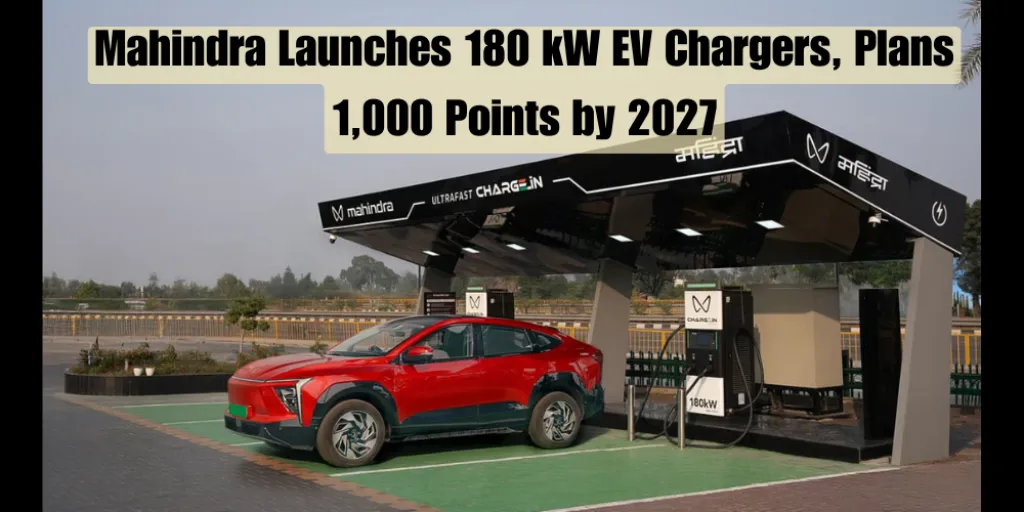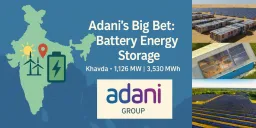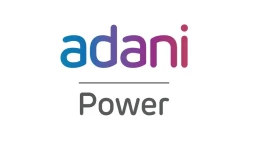Mahindra Launches 180 kW EV Chargers, Plans 1,000 Points by 2027

What’s the announcement
Mahindra has launched its first two ultra-fast EV charging stations under its new charging arm Charge_IN - one on the Bengaluru–Chennai highway (Hoskote) and the other near Delhi on NH-44 (Murthal).
Beyond these initial stations, Mahindra plans an ambitious rollout by 2027: 250 ultra-fast stations across the country, each equipped with 180 kW dual-gun chargers -totaling over 1,000 charging points.
Each station is capable of charging multiple EVs simultaneously. The company says their goal is to build a robust backbone for long-distance EV travel in India, supporting not just Mahindra EVs but vehicles from other manufacturers too.
🚗 What it means for EV owners & adopters
Faster and convenient charging: The 180 kW chargers can potentially bring compatible EVs from 20% to 80% in about 20–30 minutes (depending on the car’s battery & charging compatibility). This makes EVs more practical for long drives and inter-city travel.
Reduced “range anxiety”: As more ultra-fast charging points come up along major highways, worries about battery range become less of a barrier - boosting confidence for people considering EV ownership.
Accessibility for all EV brands: Charge_IN isn’t limited to Mahindra vehicles; owners of other EV brands will also be able to use the network via aggregator apps.
Highway-friendly charging network: The new chargers are being placed along highway corridors, often near amenities like restaurants or rest stops - making charging during travel more convenient and less of a wait.
🌱 Why this matters for India’s EV and clean-mobility future
Infrastructure gap closing: One of India’s key challenges for EV adoption has been inadequate public charging infrastructure. With this rollout, Mahindra aims to significantly close that gap.
Supporting EV growth & policy goals: As India pushes toward cleaner mobility and greater EV share, robust charging infrastructure is a prerequisite. Charge_IN’s plan could accelerate EV adoption.
Boost for long-range EVs: With models offering 500 km+ real world range already in production, fast-charging infrastructure makes long-distance road trips in EVs more realistic - which could shift public perception about EV usability.
Ev-friendly ecosystem building: As more such initiatives come up, it can lead to a network effect - more users → more demand → more investment in charging, maintenance, and related services.
🧱 What to watch out for / challenges ahead
Charger availability vs EV adoption: 1,000 points by 2027 sounds good — but with rising EV numbers, demand might outpace supply, especially on high-traffic corridors and weekends.
Charger compatibility & speed limits: Not all EVs are capable of 180 kW fast charging. Users with older or budget EVs will still need slower AC or DC chargers.
Power grid & load implications: High-capacity chargers draw significant electricity. Managing grid load, especially in high-traffic or rural corridors, will require coordination - and maybe upgrades.
Maintenance and uptime reliability: High-speed chargers need regular maintenance to stay operational. Downtime or malfunction could hurt confidence.
User cost vs convenience: Tariff per kWh, waiting time, and convenience will matter. If charging remains expensive, it might affect affordability for many EV drivers.
🔭 What the next few years may bring
If Charge_IN meets its 2027 target, India’s EV charging infrastructure could shift from patchy mostly city-based AC chargers to a more integrated, nation-wide ultra-fast network. This could bring forward:
Surge in long-distance EV travel (intercity, road trips)
Better EV adoption rates beyond metros - highways, smaller towns, second/third tier cities
Growth in secondary EV ecosystem - maintenance hubs, battery swapping, fast-charging stations at commercial spots, hospitality tie-ups
Greater investor and policy interest in renewable-powered charging (solar + EV charging), maybe pushing eco-friendly energy + mobility combos
✅ Conclusion
Mahindra’s Charge_IN initiative marks a major step forward for India’s electric-mobility infrastructure. With 180 kW ultra-fast chargers launching today and a roadmap to expand to 1,000 charging points by 2027, the company is laying down a critical backbone for EV growth nationwide.
For EV owners, this means more confidence in long-distance travel, reduced range anxiety, and greater convenience. For India’s clean-mobility goals, this could fast-track adoption and help reshape how we travel - from fossil fuel dependence to a cleaner, more sustainable electric future.









